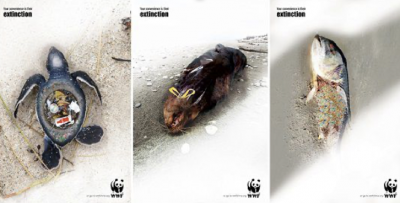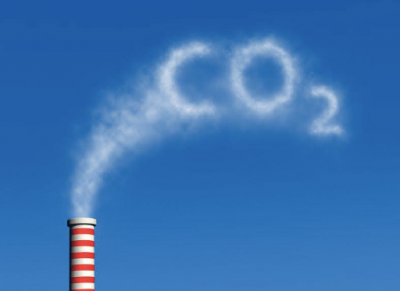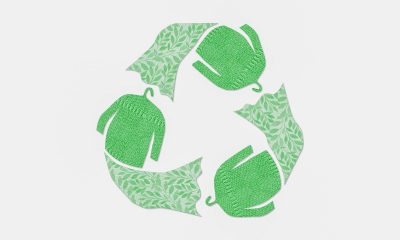Into the trap of “sustainable products”…
I was not ignorant about the environment and had many items around me that were marked as “environmentally friendly”.
Even before I joined the iSustain group, I started noticing the importance of environmental protection and learning about sustainability issues. What brought this to my attention was when I saw a photo of ocean pollution years ago. I saw hermit crabs living in plastic bottle caps, bloody seals entangled in fishing nets, and turtles covered in the garbage that couldn’t swim, and that’s when I started to learn about sustainability.

A huge amount of plastic enters the world’s oceans each year – an estimated 8 million tons.
Two years of research and analysis by the Pew Charitable Trusts and environmental think tank SYSTEMIQ, Ltd. show that if nothing is done to stop it, ocean plastic pollution will triple by 2040. That means 110 pounds (50 kilograms) of plastic for every 3.2 feet (1 meter) of shoreline.
Even if governments and businesses deliver on all their promises to curb plastic waste, global ocean plastic flows will be reduced by only 7 percent by 2040, which is not nearly enough. I think the main thing is sensible disposal and reduction in use.
Since then, I have been paying extra attention to the use of environmentally friendly products in my life. But at one point, I sent out the use of more easily biodegradable plastic bags to pick up dog poop, someone asked the question of biodegradable plastic bags are really more environmentally friendly? After this question, I launched a reflection and data investigation. By tracking my daily reflections in the group, it was easy to see that my attempt to have a greener life was a process of choice. Choosing products that seem more environmentally friendly.

The first is that I used paper bags or canvas bags instead of plastic bags.
People always habitually believe that the degradation of paper is more conducive to environmental protection, in life also advocate the use of canvas bags instead of plastic shopping bags. The reason is obvious, canvas bags can be reused, while paper bags are made of renewable materials, wood. But what makes it hard to imagine is that the earliest popularization of plastic bags promotes the positive impact of energy consumption in the production of environmental protection.

Because, in actual production, paper bags as well as canvas bags due to weight and other reasons, paper bags cause 70 times more air pollution than plastic bags, water pollution is 50 times. Where more pollution and carbon emissions are generated in the transportation as well as the production process, plastic bags are lighter in weight and therefore require less fuel to transport them. Data show that paper bags, plastic bags, canvas bags in the production of carbon emissions ratio reached a staggering 55:16:2720. in short, that means, without regard to the subsequent treatment, plastic bags for each use, canvas bags need to be used 170 times, paper bags need to be 4 times, to be considered to do the best use.
The paper manufacturing process also generates pollution. One ton of paper consumes 130-160 tons of water and produces 78-100 tons of wastewater, and these industrial wastewaters are complex in composition and difficult to treat. These wastewaters contain a high level of pigment residue. Although there is some treatment to recycle there are still a lot of wastewaters creeping into the water body, its harm will obviously affect the survival of water organisms, reduce the number and quality of organisms, and indirectly affect the human water and seafood issues. Used paper bags are easily recycled and biodegradable, but many still end up in landfills, where they are often sealed and not biodegradable. If they do degrade, they emit greenhouse gases.
Since plastic is unacceptable and paper bags are controversial, is there a better solution?
 That’s where biodegradable plastic bags offer another option. But Greenpeace reports that in China, 36 companies have “planned or built new biodegradable plastic projects, adding more than 4.4 million tons of capacity, a sevenfold increase from 2019. It is estimated that 22 million tons of biodegradable plastics will be needed cumulatively over the next five years to replace the traditional single-use plastics that have been banned in China. By 2023, global demand is expected to increase to 550 billion tons. But we don’t have enough biodegradable waste recycling stations worldwide to go with it.
That’s where biodegradable plastic bags offer another option. But Greenpeace reports that in China, 36 companies have “planned or built new biodegradable plastic projects, adding more than 4.4 million tons of capacity, a sevenfold increase from 2019. It is estimated that 22 million tons of biodegradable plastics will be needed cumulatively over the next five years to replace the traditional single-use plastics that have been banned in China. By 2023, global demand is expected to increase to 550 billion tons. But we don’t have enough biodegradable waste recycling stations worldwide to go with it.
In the modern consumer society,
it is very common for us to see a commodity being tagged with various labels, just like cosmetics representing beauty and flowers representing romance, all of which add value to the commodity and make it all easier to be consumed.
So, as people’s awareness of environmental protection increases, more and more products are labeled as environmentally friendly to get more sales. Many companies advertise their products with environmental protection as a gimmick, which is undeniably a big step forward in people’s awareness of sustainability, and people are starting to notice the importance of sustainability.
But when a product advertises itself as being environmentally friendly, does not mean that it is really environmentally friendly for yourself. For example, many people have many different styles of eco-friendly self-carrying mugs, which defeats the purpose of being environmentally friendly. Just like when I was about to replace my single-use cotton pads with sustainable cotton pads, I suddenly realized that “sustainable cotton pads” were just a soft cotton cloth, the same material as the old t-shirt I was about to throw away. There were still unused products around.
However, the question I am reflecting on is not which product is more environmentally friendly, human activities inevitably produce carbon dioxide emissions. When we discuss what is the most environmentally friendly, we may have accidentally fallen into the trap of environmental consumption.
How we view the collision between consumer society and environmental protection is one of the contemporary issues, and we as consumers need to be aware of whether we are falling into this environmental trap. To be concerned about whether an item is environmentally friendly, we should not only see how it is used and presented now, but also from the raw material to the final recycling is worth being concerned about. And of course, Service life also is important.
Ultimately, the greener option is to use less,
and if you have any bags around, use them repeatedly until they are no longer usable, saving the energy it takes to make them and recycle them. Like the stone garbage bags for dogs that got me thinking, maybe I can find those used draft papers from home or newspapers my father read instead. The main advantage of recycling is not how much space is saved in landfills, but the energy saved to produce new items to replace what people throw away.
🙂

